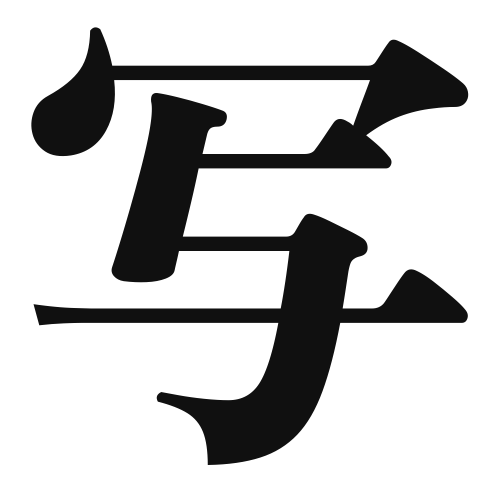1. Overview of Meaning
The kanji “写” (sha) means “to copy” or “to reproduce.” It is often associated with photography, as it conveys the idea of capturing an image or likeness of something.
2. Origin and Radicals
Formation of the Kanji: The kanji “写” is a phono-semantic compound, which means it combines both a phonetic component and a semantic component. The left part, “氵” (water), suggests a connection to fluidity or movement, while the right part, “舎” (shelter), relates to the idea of a place or a representation.
Radical: The radical of “写” is “氵,” which is related to water and often appears in kanji associated with liquids or fluid actions.
3. Examples of Usage
Common Words and Phrases: Some frequently used words that include “写” are:
- 写真 (shashin) – photograph
- 写す (utsusu) – to copy or to take a picture
Example Sentences in Daily Conversation:
- この写真はとてもきれいです。(Kono shashin wa totemo kirei desu.) – This photograph is very beautiful.
- 彼はその絵を写しました。(Kare wa sono e o utashimashita.) – He copied that painting.
4. Synonyms and Antonyms
Similar Kanji: A kanji with a similar meaning is “模” (mo), which means “to imitate” or “to model.” The difference lies in the nuance; “写” focuses more on the act of copying or reproducing, while “模” emphasizes imitation or representation.
Antonyms: An antonym of “写” is “消” (shou), which means “to erase” or “to disappear.” This represents the opposite action of copying or reproducing.
5. Cultural and Historical Background
Connection to Japanese Culture: The concept of “写” is significant in Japanese culture, especially in the context of art and photography. The practice of capturing images has deep roots in traditional Japanese aesthetics.
Proverbs and Idioms: One common idiom is “写実” (shajitsu), which means “realism” in art, emphasizing the accurate representation of subjects. This reflects the cultural value placed on authenticity and representation in Japanese art forms.
